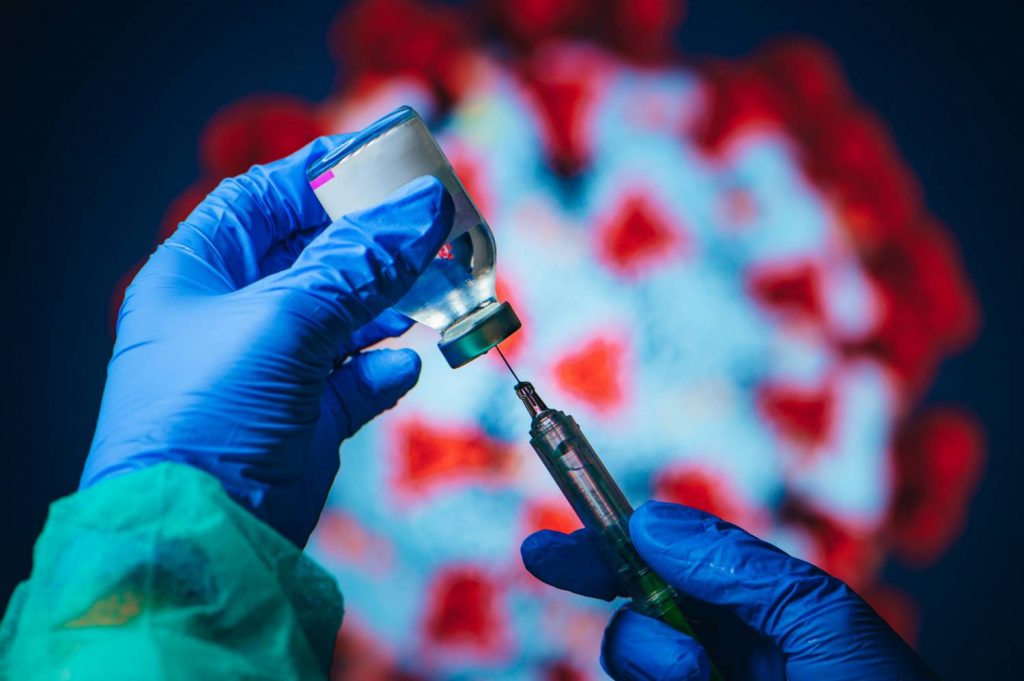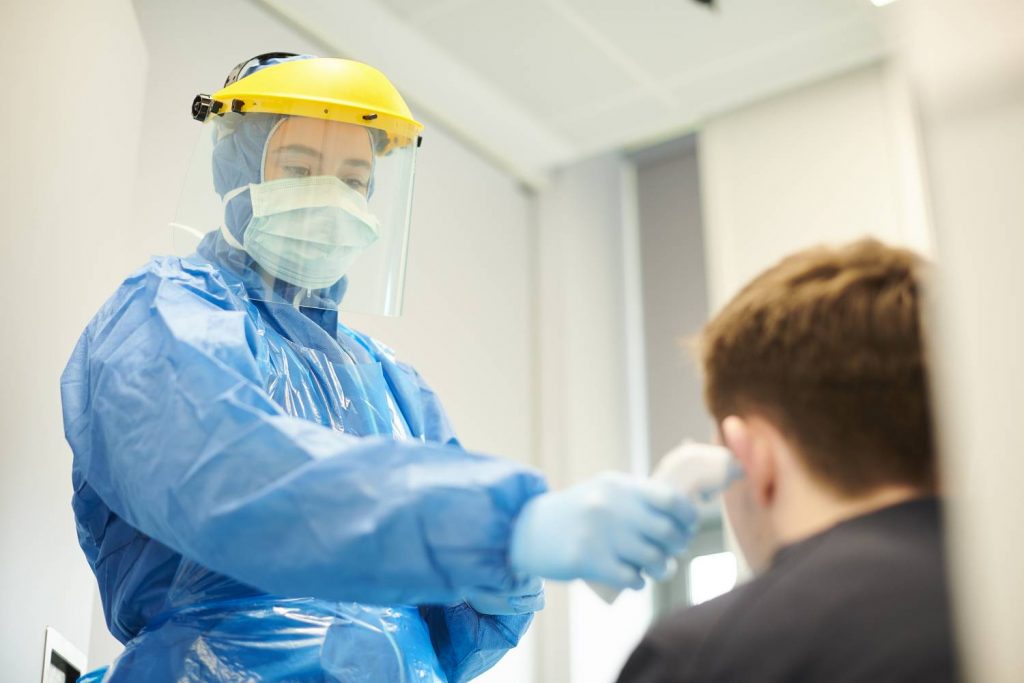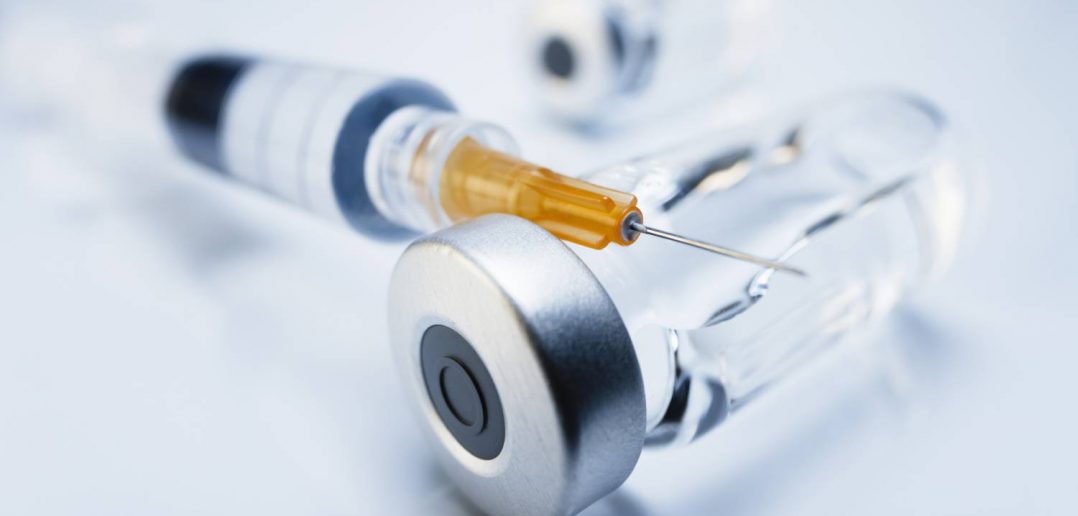This virus is very scary and it changes constantly. So when you let a virus like that infect millions and millions of people, it's going to make all of those mistakes in copying itself over and over again.
- Meghan Schaeffer, Epidemiologist, SAS

Meghan Schaeffer, EdD, MPH, MPA, is a National Public Health Advisor and Epidemiologist at SAS. Her role allows her to work with state and local governments as well as federal and international teams on a response to the COVID-19 pandemic. In this interview, Schaeffer shares details on vaccine efficacy and how over time certain dynamic variables about people and disease contribute to a change in how to effectively respond.
In an incredible scientific feat, COVID-19 vaccines were developed in less than a year, thanks to new "plug and play" technologies like messenger RNA and vector vaccines. Each vaccine developed offers a layer of protection against the disease, each with its own level of efficacy.
Vaccine efficacy measures how well a vaccine protects against disease. Clinical trials offer an ability to predict efficacy with a set number of participants, and researchers control the conditions the vaccine is in. The vaccine gets stored at the right temperature and can be administered at an exact dosage and participants can be monitored for possible side effects.
But that's just the first phase of efficacy. As Schaeffer explains, the efficacy established during a clinical trial can shift once the vaccine goes out to the general public.
RELATED: Vaccine Efficacy, Clinical Trials, and SAS: Biostats in the Time of COVID
"When we get out into the real world, we know there are a lot of other variables present. Sometimes there are issues with storage and handling. Not everybody can get their doses at the rate, spacing, or right timing," Schaeffer said. "People's immune systems are very diverse and respond in different ways, as do their medications, and you can't account for all the variability in people in a clinical trial. So typically, you see an efficacy number in a clinical trial that is fairly high. But then when you get into the real world, you always see a slight reduction in efficacy for all the reasons I just mentioned, variations in people and uptake, and administration and dosing. And so, you take a couple percentage points off and that's the real-world effectiveness."

What happens with vaccine efficacy over time?
Schaeffer says a good example of how vaccine efficacy can change over time came from a 2006 epidemic of mumps among college students and others in a small Iowa town. Many children get two vaccine doses for mumps when they are very young, which has led to cases of mumps tapering off in recent years.
RELATED: 8 terms you need to understand when assessing COVID-19 data
"We had not seen mumps in forever. So, then we start seeing more and more cases, and they're happening in college-age students. So, we start pulling the dots together. Pretty soon we have several cases and we call the CDC. We said, ‘We don't know what's happening. These people are vaccinated by and large with two doses.' We discover a cluster with three colleges and a small Iowa town where there were beer parties and people were sharing beverages and unknowingly transmitting mumps."
Schaeffer was working as an epidemiologist at the Iowa Department of Public Health at the time.
"What we later found is that it was imported from the UK, where they were having a mumps outbreak, to an Iowa university. Then it spread to two other college campuses resulting in a 6000-case multistate outbreak," Schaeffer continued.
This example shows how viruses change over time, mainly because they are not good at making exact copies of themselves, which can lead to variants.
"They [viruses]make mistakes, and some of those mistakes mean that they're more transmissible or that they can evade the immune system better, and so obviously those strains are going to be the ones that are most popular because they're the most successful. So that happened with mumps which resulted in a third vaccine shot which was given to people who were exposed in this high-risk population," Schaeffer explained. "However, the recommendation for the general population was unchanged and a booster dose was recommended in this unusual circumstance."
How does this tie back to COVID-19?
According to Schaeffer, coronaviruses have been around for about 80 years, but little was known about their ability to mutate into new human diseases until SARS appeared in 2002.
"SARS in 2002 was the first time we saw an entirely new coronavirus infecting humans and it's killing people. It's transmissible. Anytime you have a respiratory virus, that's pretty much an epidemiologist’s worst nightmare because you can't see it and it's hard to control. I mean, you can't see any viruses, but it's expelled through the air, and you don't know how long it's going to be in the air, how far it can spread, how far droplets can carry it."

With SARS-CoV-2, the virus that causes COVID-19, little was known about it until it started spreading in 2020. Now there are variants of the virus that continues to change.
"This virus is very scary, and it changes constantly. So when you let a virus infect millions and millions of people, it's going to make all of those mistakes in copying itself over and over again. And then we have the delta variant – the strain that’s more successful because of a minor change in its DNA – just explodes, which makes the vaccine less effective,” Schaeffer said.
The CDC says people who are vaccinated can still get COVID-19 if they are exposed to the virus that causes it, but symptoms are generally mild and rates of hospitalization and death remain low among the vaccinated.
How the vaccine works is your body thinks it's infected. It mounts this antibody response. But then at the same time, as it's creating those antibodies, it saves a blueprint in your body's immunologic system and that way your body knows how to create those antibodies in the future.
- Meghan Schaeffer, Epidemiologist, SAS
If you're vaccinated, once your body sees and recognizes the virus, the vaccine can, in most cases, prevent breakthrough infections and the ability for vaccinated people to spread the virus.
RELATED: Visualize COVID-19 vaccine data using SAS Viya
Schaeffer believes that getting a booster shot will be key in the fight against the COVID-19 pandemic.
"The vaccine boosters remind your body that this is still a threat. You still need to know how to protect yourself and that's what a booster shot does for you," Schaeffer said.
What about the future of the pandemic?
Despite being hopeful that we won't continue to see pandemics, Schaeffer is urging people to realize that there really aren't any other viruses that cause widespread inflammation and long-term health effects like COVID-19.
"This virus causes potentially long-term respiratory effects. It prevents you from being able to breathe right. It causes brain fog, depression, anxiety, sleeplessness and this happens in about one-third of adult cases. This is not a virus to mess around with," she said.
As winter approaches in the Northern Hemisphere, a very substantial and dangerous flu season may be on the horizon, and the removal of mitigation strategies may hinder progress in beating the COVID-19 pandemic. To help, we must work together, she says.
"Flu is probably going to be really bad this year too, so we need to prepare ourselves for it. Let's get these booster doses in arms. Let's get people who aren't vaccinated, vaccinated. Let's get our seasonal flu vaccines and remember, like with that winter coat, we have to put on these layers of prevention strategies all winter long because these viruses love cold. They love the lack of humidity and they spread really easily. And I'm worried about the mental health status of our health care workers and our public health people. They're all very, very tired and this is really taking a toll."


